RISK MANAGEMENT:There is much literature existing about RISK MGT. However, I have found the following to be useful in providing a concise view of such:
- RISK is a potential situation for unwanted negative consequences from various events
- RESILIENCE is an ability to prevent, withstand and recover from those events
- FAILURES are occurrences that have negative consequences to operations
The following view provides insight as to the sources of failures.
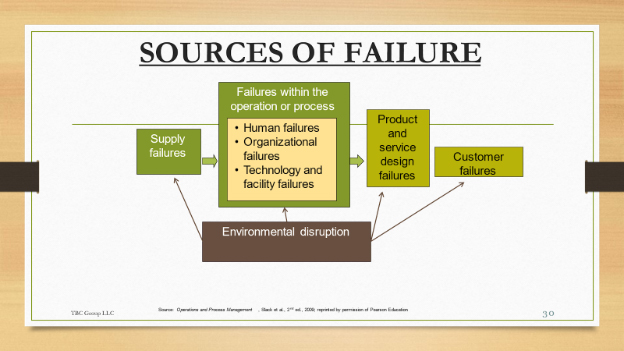
There is a need to manage the risk with the supplier relationship – note the chart below which displays it:
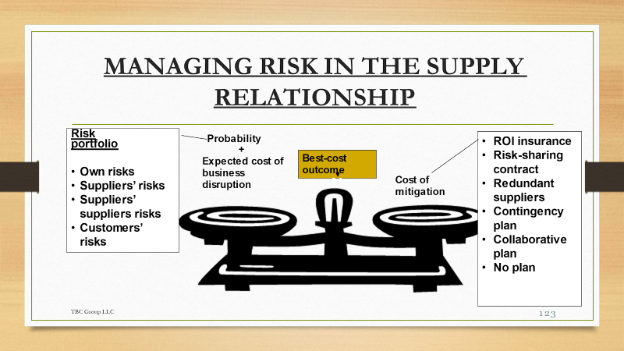
INVENTORY OPTIMIZATION:
To start with, we need to define what we mean by inventory. It is those stocks or items used to support production (raw materials & work-in-process as well as supporting activities (maintenance, repair and operating supplies – MRO) and customer service (finished goods and spare parts).
Organizations typically deal with ten (10) critical inventory issues:
- Inventory strategy by product line
- Forecast reliability
- Master scheduling stability
- Stocking policy
- Replenishment lead time
- Investment level
- Obsolete inventory control
- Product change management
- Data integrity
- Communications between functions
We need to ensure we understand what is the meaning of the following (since it provides insight as to what we will need to do):
- INVENTORY MANAGEMENT: the function within the enterprise concerned with planning and policy points for inventory
- INVENTORY CONTROL: Activities and techniques for maintaining the desired level of inventory
- Execution
One of the initial things to be established is the determination of a Customer Service Level. This involves:
- Leadership determining the number of stockouts it is willing to accept
- Management MUST understand that stock outs are acceptable at a planned level
- Factors affecting the service level
- Primary one is SAFETY STOCK
FACTORS AFFECTING SAFETY STOCK:
- Competitive delivery pressures
- What your competition is doing
- Warranty commitments (spare parts)
- Degree of inconsistency of demand
- Customer service level
- Level of investment
- Shelf life
- Availability from suppliers
- Production capacity
- Political/international factors
Please note the formula for calculating SAFETY STOCK below:
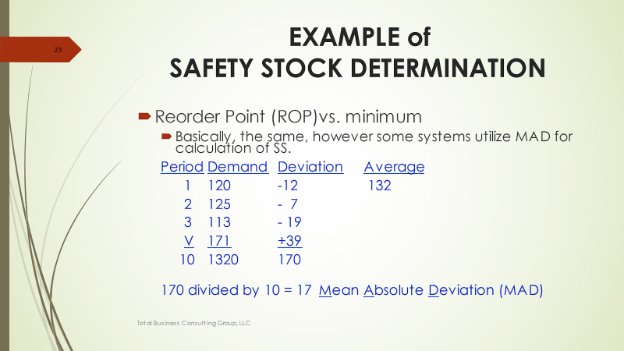
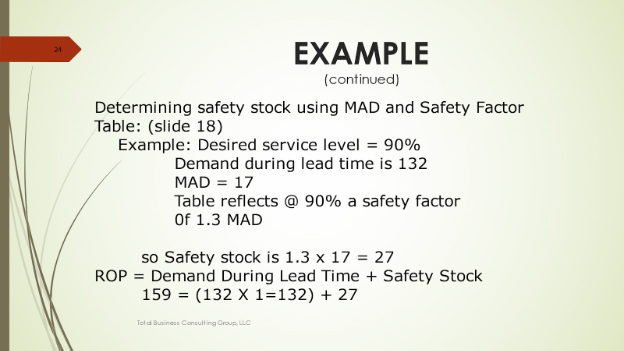
This protection can increase if a higher level of service to customers is desired by the leadership. However, there is a cost associated with such which is the cost of carrying inventory. Those cost are displayed in the next pictorial.
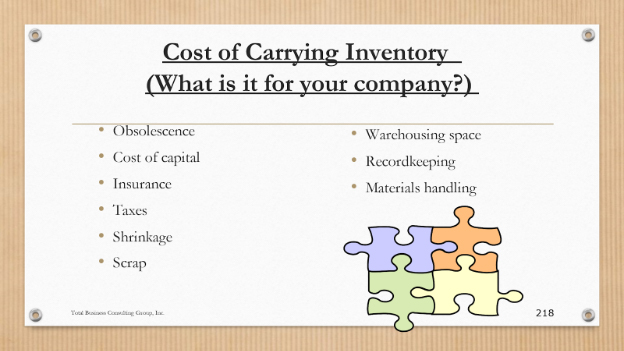
The more inventory you have for covering for "JUST-IN-CASE" situations will increase your inventory investment because the cost of carrying it will go up. This number is calculated by your Finance/Cost Accounting group. It needs to be utilized when deciding what is the level of service to be provided to the market-place.
Some metrics for customer service are:
- Focus on requested receipt date from the customer as opposed to your commitment date
- Your on-time delivery performance to both requested date and your commitment date
- That will give insight to what the customer expectations are versus what the marketplace studies reflect – a hint to what level of service you need to be considering.
Inventory investment is critical in industries where technology and shelf-life are market consideration – even more important when looking at doing a better job of satisfying customer needs in a a variety of ways to minimize risk & investment!
REMEMBER RISK AND INVENTORY COSTS ARE RELATED – REASON WHY YOU NEED TO UNDERSTAND THE INFORMATION IN THIS ARTCLE!